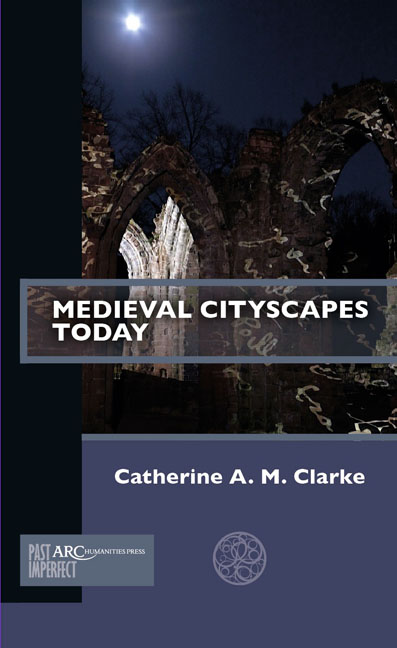Winchester: Afterword
Published online by Cambridge University Press: 20 November 2020
Summary
I’m in Winchester to prepare for a television documentary: an episode of the series Britain's Most Historic Towns (IWC Media for Channel 4 in the UK), which will feature the city as “Britain's Most Norman Town.” The sequence I’m involved in will focus on the lost palace of William the Conqueror, so here I am, hunting for traces of the Normans in the heart of the modern city. As I walk through the streets, I’m re-tracing the paths of many other visitors and scholars, discovering fragments of history through a series of encounters with places, people, and the past.
In a chocolate shop on High Street, a wooden shelf unit laden with bags of truffles and arrays of brightly-wrapped bars partly obscures the medieval stonework on the back wall. But, unmistakably, there's a semi-circular Romanesque arch and a pillar, the wall around them filled with flintwork. The pillar is marooned up against much later brick, not obviously supporting anything very much—hints that this could be a fragment of masonry re-purposed and used in a new context. On the other side of this wall is the Church of St. Lawrence, built in the twelfth century on the site of the chapel royal of the Norman palace. The archway most likely dates from this mid-twelfth-century construction, and probably formed the original doorway onto the street. But the suggestive configuration of pillar and arch raises the possibility that this is medieval recycling: perhaps even the twelfth-century re-use of worked stone from the defunct Norman palace and chapel.
Round the corner, through the narrow passageway from the Butter Cross (a fifteenth-century market cross) to The Square, a large stone chimney breast also stands out conspicuously from the painted cement-rendered wall around it. A man who has been sleeping rough in the shelter of the passage points out to me a piece of decorative stone lower in the chimney breast: the block is worked into simple scallop shapes, overlapping like birds’ feathers or the scales of a dragon. The opportunistic medieval inhabitant of Winchester who appropriated this stone for their chimney was, of course, far from unusual.
- Type
- Chapter
- Information
- Medieval Cityscapes Today , pp. 95 - 102Publisher: Amsterdam University PressPrint publication year: 2019



